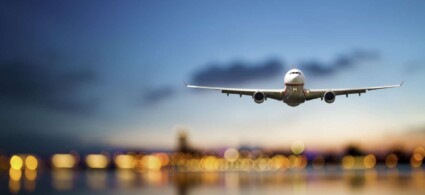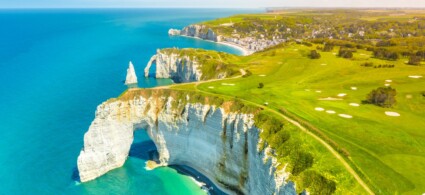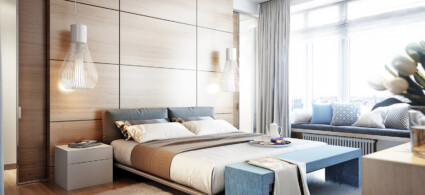

Normandy is a wonderful land: it alternates between rugged coastlines with imposing white cliffs overlooking the turquoise sea and expanses of green meadows, gentle pastures and the places immortalised by the great impressionist painters.
Its table, with produce from the land and sea, tickles the most refined palates and is bathed in the fragrant Calvados liqueur. The great Gothic cathedrals, fishing villages and World War II sites make a trip to Normandy a very special one, capable of offering very different emotions.
It is a complete itinerary, embracing every corner of this region so rich and varied: from nature to art, from food to tradition, from history to culture, in a never predictable succession of environments and places to visit.

Just under an hour from Paris, Normandy holds incredible historical, artistic and natural beauty.
Just a stone’s throw from the French capital is Rouen, a beautiful medieval town full of colourful, perfectly preserved half-timbered houses and an imposing Gothic cathedral, immortalised several times by Claude Monet. The estate of the greatest Impressionist painter is not far away, located in Giverny: here you can visit his house, but above all his enchanting gardens, the absolute protagonists of his works.
Overlooking the English Channel is the Alabaster Coast: one of Normandy’s most spectacular natural panoramas. It is a succession of majestic white chalk cliffs, reflected in the turquoise sea, stretching from Dieppe to Etretat, passing through Fecamp.
This is followed by the seaside villages of the Cote Fleurie: from the picturesque port of Honfleur, with its slate-roofed houses, to the elegant towns of Deauville and Trouville, which still flaunt the charm of the Belle Epoque.
The wild Normandy coast is sadly famous for one of the most terrible pages of modern history: the landing beaches recount a bloody and fierce battle to free Europe from Nazi occupation. These places of memory are an unmissable stop on your trip to Normandy.
Immersed in the bucolic landscape of Calvados, you will find the wonderful town of Bayeux, with its medieval tapestry and grandiose Gothic cathedral, and the renovated Caen, which preserves the abbeys built by William the Conqueror.
Normandy is a very popular region especially during the summer, a season that is always cool and breezy due to the influence of the English Channel. This is the time of year when the climate is most pleasant: less rainfall and mild temperatures, never torrid.
Of course, it is also the most expensive time of the year: it is necessary to book accommodation well in advance, especially on weekends from May to September, when Parisians flee the city’s sultriness to seek refreshment on the cool, windy beaches of Normandy.
Autumn and spring, although rainier, are a good alternative: prices drop, availability increases and there are many events around, such as the famous American film festival in Deauville.
Reaching Normandy by plane is definitely the fastest and often the cheapest way. The French capital has no less than three international airports to book your flight to: Paris Orly Airport, Paris-Charles de Gaulle Airport and Paris-Beauvais Airport.
You will have many direct flights available: we recommend that you rent a car at the airport once you have landed. At this point, all you have to do is start your trip to Normandy and discover the most attractive locations.
Those who prefer to travel by train will again have to travel via Paris. In fact, the best option is to take a TGV high-speed train.



